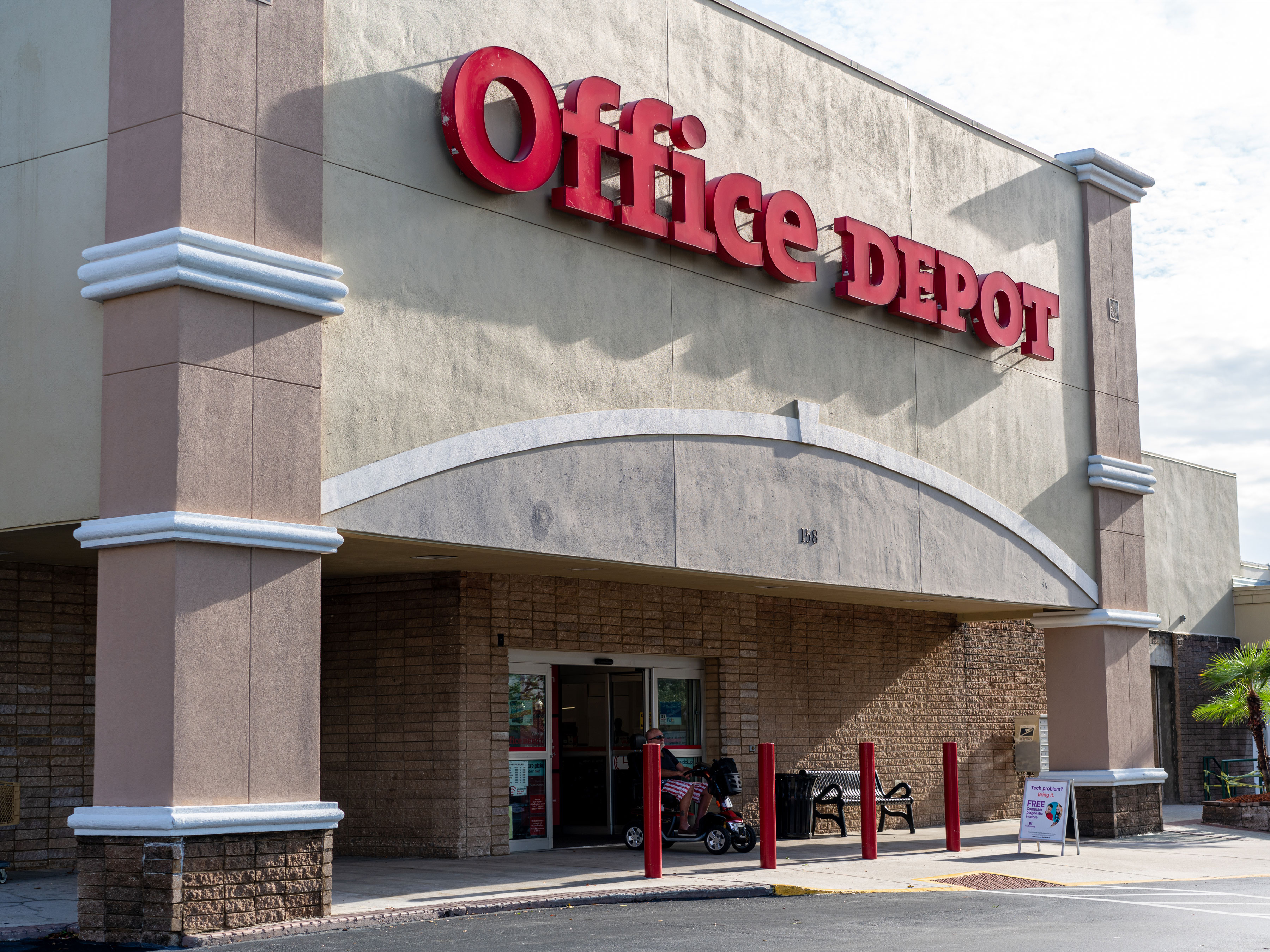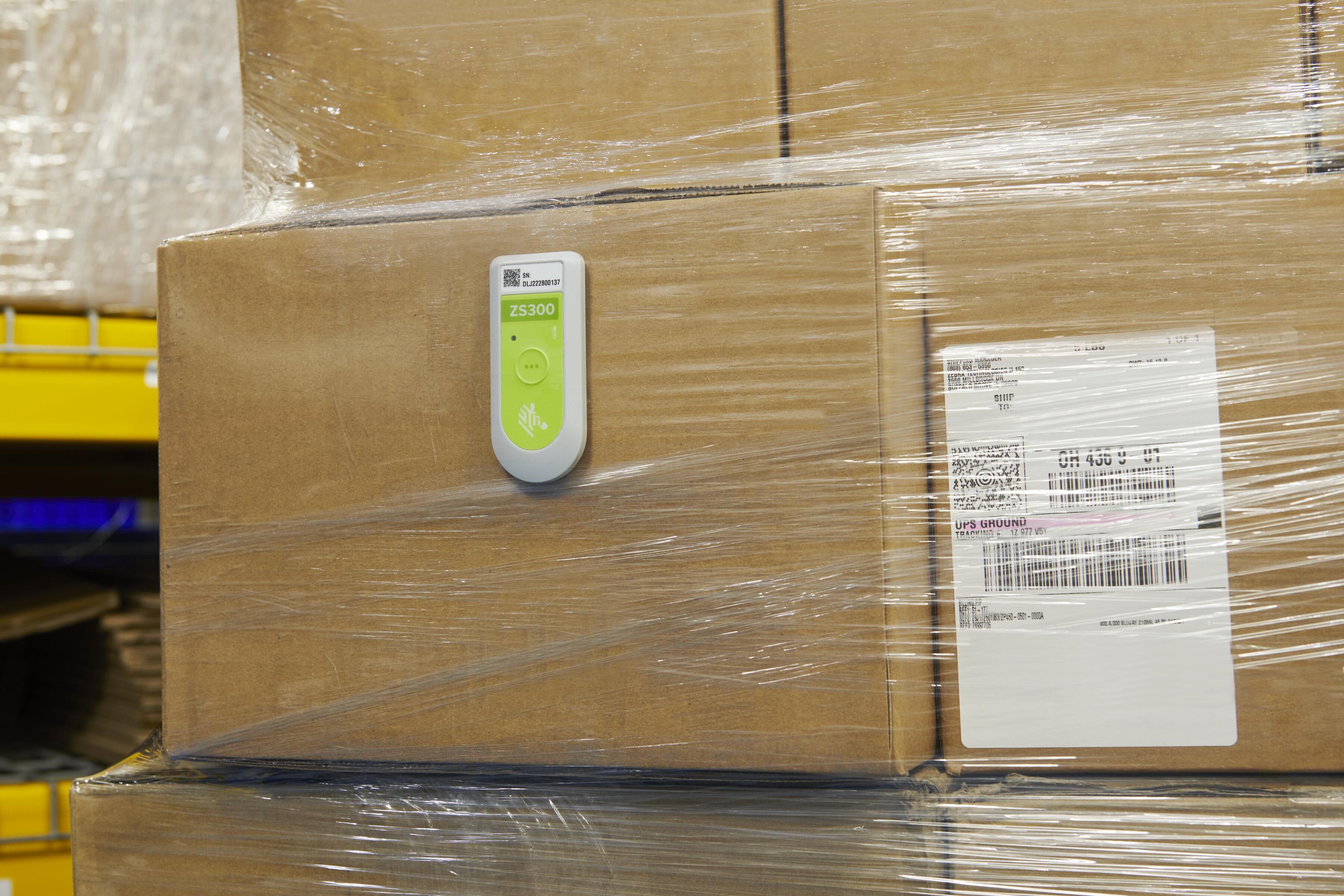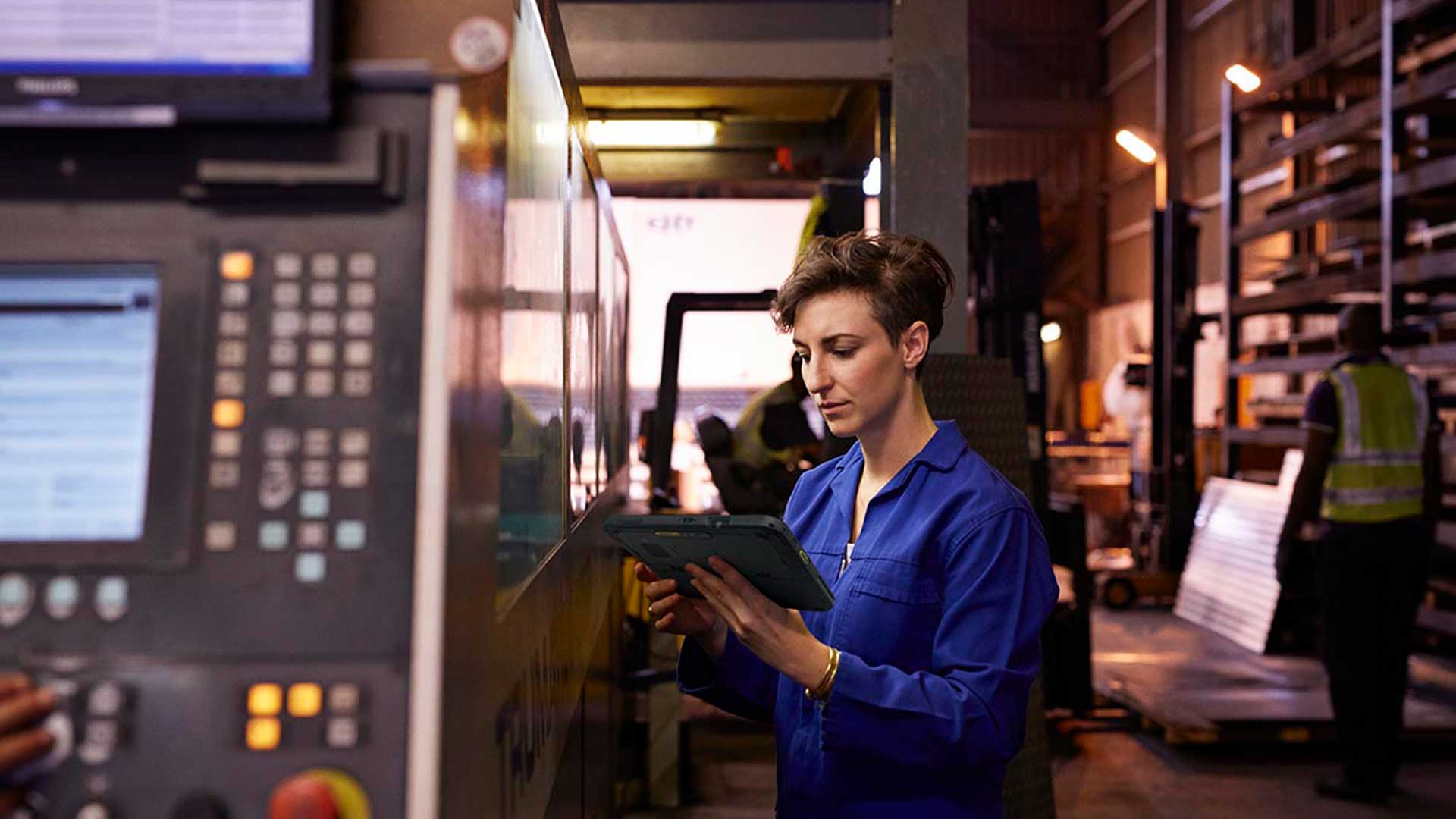Transform retail operations with Zebra’s retail technology solutions, featuring hardware and software for improving inventory management and empowering teams.
Streamline operations with Zebra’s healthcare technology solutions, featuring hardware and software to improve staff collaboration and optimize workflows.
Enhance processes with Zebra’s manufacturing technology solutions, featuring hardware and software for automation, data analysis, and factory connectivity.
Zebra’s transportation and logistics technology solutions feature hardware and software for enhancing route planning, visibility, and automating processes.
Learn how Zebra's public sector technology solutions empower state and local governments to improve efficiency with asset tracking and data capture devices.
Zebra's hospitality technology solutions equip your hotel and restaurant staff to deliver superior customer and guest service through inventory tracking and more.
Zebra's market-leading solutions and products improve customer satisfaction with a lower cost per interaction by keeping service representatives connected with colleagues, customers, management and the tools they use to satisfy customers across the supply chain.
Empower your field workers with purpose-driven mobile technology solutions to help them capture and share critical data in any environment.
Zebra's range of Banking technology solutions enables banks to minimize costs and to increase revenue throughout their branch network. Learn more.
Zebra's range of mobile computers equip your workforce with the devices they need from handhelds and tablets to wearables and vehicle-mounted computers.
Zebra's desktop, mobile, industrial, and portable printers for barcode labels, receipts, RFID tags and cards give you smarter ways to track and manage assets.
Zebra's 1D and 2D corded and cordless barcode scanners anticipate any scanning challenge in a variety of environments, whether retail, healthcare, T&L or manufacturing.
Zebra's extensive range of RAIN RFID readers, antennas, and printers give you consistent and accurate tracking.
Choose Zebra's reliable barcode, RFID and card supplies carefully selected to ensure high performance, print quality, durability and readability.
Zebra's rugged tablets and 2-in-1 laptops are thin and lightweight, yet rugged to work wherever you do on familiar and easy-to-use Windows or Android OS.
With Zebra's family of fixed industrial scanners and machine vision technologies, you can tailor your solutions to your environment and applications.
Zebra’s line of kiosks can meet any self-service or digital signage need, from checking prices and stock on an in-aisle store kiosk to fully-featured kiosks that can be deployed on the wall, counter, desktop or floor in a retail store, hotel, airport check-in gate, physician’s office, local government office and more.
Adapt to market shifts, enhance worker productivity and secure long-term growth with AMRs. Deploy, redeploy and optimize autonomous mobile robots with ease.
Discover Zebra’s range of accessories from chargers, communication cables to cases to help you customize your mobile device for optimal efficiency.
Zebra's environmental sensors monitor temperature-sensitive products, offering data insights on environmental conditions across industry applications.
Zebra's location technologies provide real-time tracking for your organization to better manage and optimize your critical assets and create more efficient workflows.
Enhance frontline operations with Zebra’s AI software solutions, which optimize workflows, streamline processes, and simplify tasks for improved business outcomes.
Empower your frontline with Zebra Companion AI, offering instant, tailored insights and support to streamline operations and enhance productivity.
The everything you need to rapidly and cost effectively develop high-performance AI vision applications on Zebra mobile computers.
Zebra Frontline AI Blueprints deliver adaptable, real-world AI frameworks that automate manual tasks and drive efficiency in high-pressure frontline operations.
Zebra Workcloud, enterprise software solutions boost efficiency, cut costs, improve inventory management, simplify communication and optimize resources.
Keep labor costs low, your talent happy and your organization compliant. Create an agile operation that can navigate unexpected schedule changes and customer demand to drive sales, satisfy customers and improve your bottom line.
Drive successful enterprise collaboration with prioritized task notifications and improved communication capabilities for easier team collaboration.
Get full visibility of your inventory and automatically pinpoint leaks across all channels.
Reduce uncertainty when you anticipate market volatility. Predict, plan and stay agile to align inventory with shifting demand.
Drive down costs while driving up employee, security, and network performance with software designed to enhance Zebra's wireless infrastructure and mobile solutions.
Explore Zebra’s printer software to integrate, manage and monitor printers easily, maximizing IT resources and minimizing down time.
Make the most of every stage of your scanning journey from deployment to optimization. Zebra's barcode scanner software lets you keep devices current and adapt them to your business needs for a stronger ROI across the full lifecycle.
RFID development, demonstration and production software and utilities help you build and manage your RFID deployments more efficiently.
RFID development, demonstration and production software and utilities help you build and manage your RFID deployments more efficiently.
Zebra DNA is the industry’s broadest suite of enterprise software that delivers an ideal experience for all during the entire lifetime of every Zebra device.
Advance your digital transformation and execute your strategic plans with the help of the right location and tracking technology.
Boost warehouse and manufacturing operations with Symmetry, an AMR software for fleet management of Autonomous Mobile Robots and streamlined automation workflows.
The Zebra Aurora suite of machine vision software enables users to solve their track-and-trace, vision inspection and industrial automation needs.
Zebra Aurora Focus brings a new level of simplicity to controlling enterprise-wide manufacturing and logistics automation solutions. With this powerful interface, it’s easy to set up, deploy and run Zebra’s Fixed Industrial Scanners and Machine Vision Smart Cameras, eliminating the need for different tools and reducing training and deployment time.
Aurora Imaging Library™, formerly Matrox Imaging Library, machine-vision software development kit (SDK) has a deep collection of tools for image capture, processing, analysis, annotation, display, and archiving. Code-level customization starts here.
Aurora Design Assistant™, formerly Matrox Design Assistant, integrated development environment (IDE) is a flowchart-based platform for building machine vision applications, with templates to speed up development and bring solutions online quicker.
Designed for experienced programmers proficient in vision applications, Aurora Vision Library provides the same sophisticated functionality as our Aurora Vision Studio software but presented in programming language.
Aurora Vision Studio, an image processing software for machine & computer vision engineers, allows quick creation, integration & monitoring of powerful OEM vision applications.
Adding innovative tech is critical to your success, but it can be complex and disruptive. Professional Services help you accelerate adoption, and maximize productivity without affecting your workflows, business processes and finances.
Zebra's Managed Service delivers worry-free device management to ensure ultimate uptime for your Zebra Mobile Computers and Printers via dedicated experts.
Find ways you can contact Zebra Technologies’ Support, including Email and Chat, ask a technical question or initiate a Repair Request.
Zebra's Circular Economy Program helps you manage today’s challenges and plan for tomorrow with smart solutions that are good for your budget and the environment.
The Zebra Knowledge Center provides learning expertise that can be tailored to meet the specific needs of your environment.
Zebra has a wide variety of courses to train you and your staff, ranging from scheduled sessions to remote offerings as well as custom tailored to your specific needs.
Build your reputation with Zebra's certification offerings. Zebra offers a variety of options that can help you progress your career path forward.
Build your reputation with Zebra's certification offerings. Zebra offers a variety of options that can help you progress your career path forward.

Before a pair of shoes reaches your doorstep, it may pass through up to 30 touchpoints where Zebra products, solutions, or workers using Zebra devices play a critical role in its journey. From stitching materials on factory floors to last-mile delivery, each interaction involves intricate workflows that demand precision, speed, and intelligence. In this episode of Better Conversations, I sat down with Tom Bianculli, Chief Technology Officer at Zebra Technologies, to explore how intelligent operations streamline this journey while keeping people at the heart of the process.
Building Efficiency Through Visibility, Connectivity, and Automation
Tom opened the discussion by illustrating the impact of cutting-edge technologies in manufacturing. Machine vision and artificial intelligence (AI) actively inspect materials in real time, ensuring quality while eliminating costly errors. Our recent study with Oxford Economics revealed that manufacturers optimizing their top workflow of quality control and assurance saw revenue growth uplift by 2.4 percentage points and profitability improvements of 1.4 percentage points, on average.
After production, the shoes may enter a supply chain that benefits from RFID and GS1 Digital Link for real-time tracking of pallets and individual items. Tom explained that these tools help businesses combat counterfeit goods. By introducing serialization and enhanced visibility, manufacturers secure their products and maintain trust.
Retailers Enhance Customer Satisfaction Through Technology
Retailers experience similar benefits by embracing intelligent operations – integrating advanced technologies like AI, automation and data with human expertise to optimize business processes. Advanced inventory management systems, including mobile computers and RFID readers, improve stock accuracy and enable seamless experiences for customers. According to our research, retailers adopting these technologies reported a 21% improvement in customer satisfaction and up to an 1.8 percentage-point increase in revenue growth.
Tom emphasized how AI-driven forecasting equips retailers to respond with agility to changing consumer demands. By automating inventory tracking, associates focus on meaningful customer interactions rather than manual stock counts. This shift strengthens the customer experience while driving operational efficiency. This topic was a key focus at Zebra’s recent Frontline AI Summit, where some of the sharpest minds gathered to discuss how to use AI for streamlining operations, empowering teams, and delivering better results.
Transportation and Logistics Innovate for Resilience
The shoes’ journey continues through transportation and logistics, where even minor disruptions cascade across the supply chain. Companies optimizing key delivery and inventory workflows in this sector experienced a revenue growth increase of up to 3.4 percentage points along with a similar increase in profitability according to our study.
Cobots, or collaborative robots, now handle picking and packing tasks in warehouses alongside human workers. Software intelligence and autonomous mobile robots (AMRs) help orchestrate these processes, ensuring accuracy and speed. Tom highlighted how these advancements create a more reliable supply chain, where precision and efficiency meet the demands of a fast-paced world.
Intelligent Operations Drive Business Success
Throughout the conversation, Tom underscored the necessity of intelligent operations for modern businesses. Manufacturers, retailers, and logistics providers adopting workflow modernization achieve more than just operational efficiency. These changes empower teams to make informed decisions, reduce waste, and elevate customer satisfaction.
Our study with Oxford Economics quantified the potential benefits. Optimizing workflows in top companies within these industries unlocks billions of dollars in additional revenue and profit. As an example, retailers alone could capture $65.9 billion in aggregate revenue growth by embracing these technologies.
Envisioning a Future Fueled by Innovation
As our discussion concluded, Tom reflected on the broader benefits of digitizing and automating operations. Organizations that prioritize the connected frontline, asset visibility, and intelligent automation lead their industries by driving better outcomes at every level.
This journey toward innovation focuses on empowering people, improving lives, and creating opportunities. From factory floors to customers’ homes, intelligent operations deliver results that extend beyond the technology itself.
To learn more about the role of intelligent operations, watch the full episode of Better Conversations. I’m confident you will discover practical insights to implement today and prepare for the opportunities of tomorrow.
Zebra Developer Blog
Zebra Developer BlogZebra Developer Blog
Are you a Zebra Developer? Find more technical discussions on our Developer Portal blog.
Zebra Story Hub
Zebra Story HubZebra Story Hub
Looking for more expert insights? Visit the Zebra Story Hub for more interviews, news, and industry trend analysis.
Search the Blog
Search the BlogSearch the Blog
Use the below link to search all of our blog posts.
Most Recent
Legal Terms of Use Privacy Policy Supply Chain Transparency
ZEBRA and the stylized Zebra head are trademarks of Zebra Technologies Corp., registered in many jurisdictions worldwide. All other trademarks are the property of their respective owners. Note: Some content or images on zebra.com may have been generated in whole or in part by AI. ©2025 Zebra Technologies Corp. and/or its affiliates.




